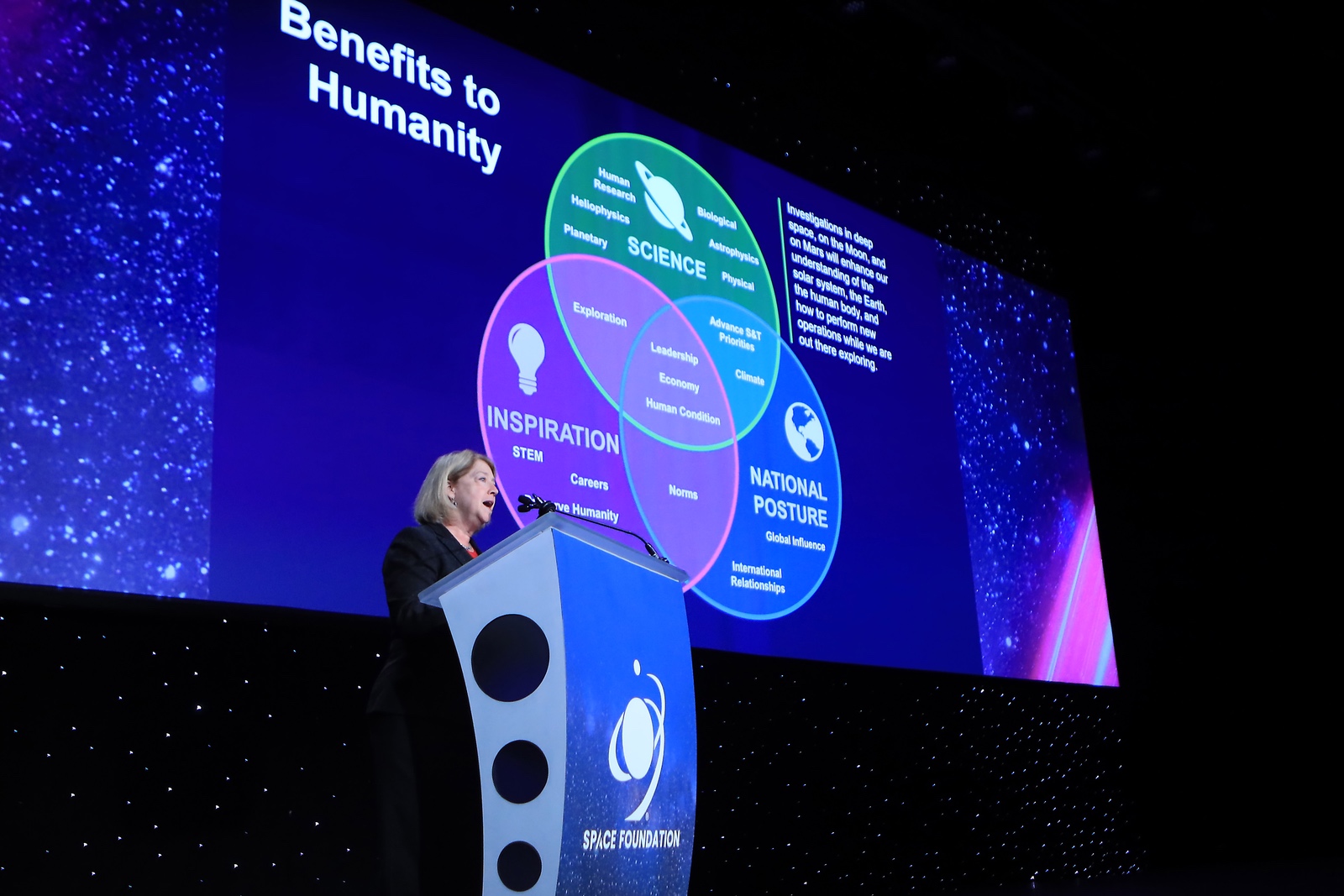Products You May Like
COLORADO SPRINGS — NASA has released new details on the initial phases of its architecture to return humans to the moon as a step towards eventual missions to Mars.
Speaking at the 38th Space Symposium April 18, NASA Deputy Administrator Pam Melroy rolled out a 150-page document describing its plans for the initial series of Artemis missions to the moon and how they fit into a set of more than 60 objectives for its long-term plans for human missions to the moon and Mars.
“The architecture concept review details plans for early human exploration of the moon’s south pole,” she said. “It provides more definition for plans through Artemis 4 and sets the stage for the first crewed missions to Mars.”
The document describes how the various programs in development fit together to carry out those missions, such as the Space Launch System, Orion, Gateway and Human Landing System. Those programs are linked to specific objectives, functions and use cases for those missions.
Along with the architecture document, NASA released several white papers to explain aspects of the architecture, such as the use of the near-rectilinear halo orbit around the moon and the Gateway that will operate in it.
“I think they provide a very succinct description of why we’re doing what we’re doing, and especially how the Artemis missions to the moon are going to reduce the risk for future Mars missions,” Melroy said of the white papers.
The document extends, at a higher level, to future phases of Artemis with sustained lunar exploration and later human missions to Mars. “We’re going to learn a lot on the way so we’re not ready to talk about sustained presence yet on Mars,” she explained, “but we have the shape there.”
Other NASA officials have noted tweaks to earlier plans for later phases of Artemis, such as a shift from a single “base camp” at the lunar south pole to several sites that could be visited on later Artemis missions.
Jim Free, NASA associate administrator for exploration systems development, said at an April 17 briefing that, because of changing lighting conditions at the south pole, missing a launch window for a particular site might delay a mission there by months. “We could maybe have two or three sites to go to that help our science diversity,” he said.
The architecture was developed internally at NASA, but Melroy said there will be opportunities for industry and international partners to provide input. “We identified some areas for collaboration,” she said, although the architecture doesn’t spell out specific procurement plans. “It does help show where we are and where we’re headed, and we know how important that is for our industry and international partners.”
Melroy said that NASA plans forums this summer where those commercial and international partners will be able to offer feedback on the architecture, as well as workshops organized by professional societies. That feedback will assist NASA’s next round of architecture development, which will be done on annual cycles starting in November to work on later missions.
“NASA has positioned this strategy for longevity and success,” she said. “This is a critical milestone for us in our moon-to-Mars strategy. We feel very aligned with our partners. We want to continue to stay that way.”
